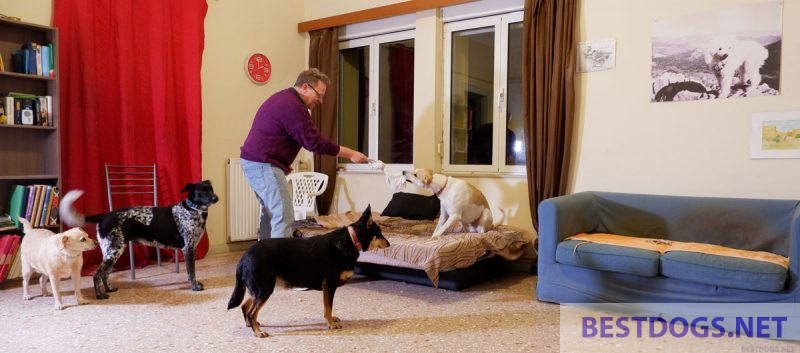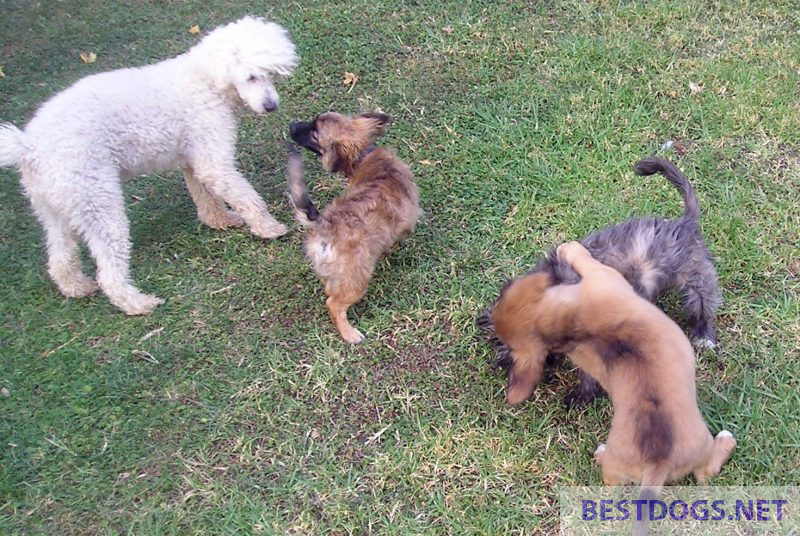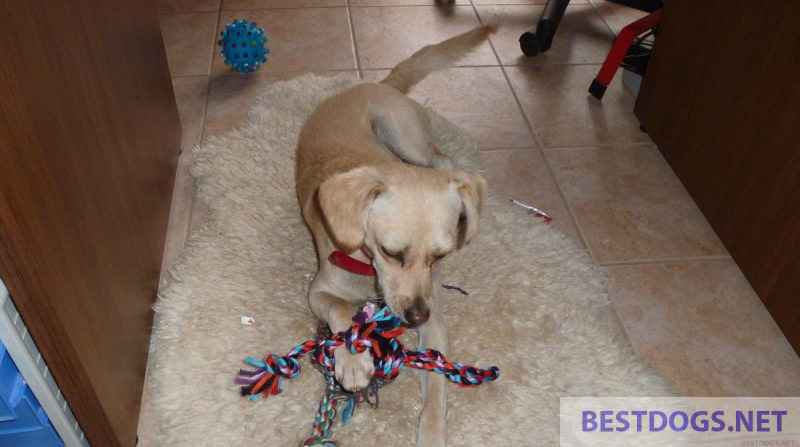The dog’s social needs and anxiety problems.


Social needs of dogs
Table of Contents
Dogs are highly social animals and have evolved as such, exercising this socialization not only with members of their own species, but also cooperating with other living creatures – which fortunately includes humans.
The need for social interaction is also present in the domestic dog, and when it is lacking, the dog may show worrying signs.
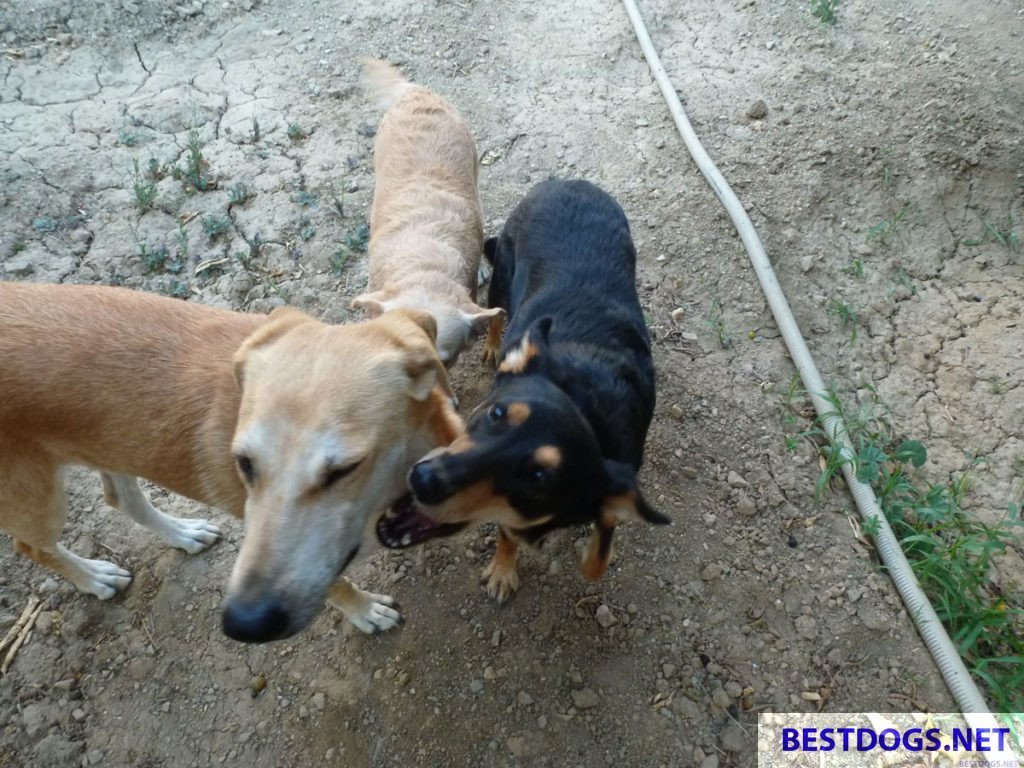
If the owner has a busy lifestyle with not much time for the dog and therefore leaves it alone all day, this in itself can be a problem for the well-being. This is exacerbated if the dog spends the time alone in a confined place where it lacks stimulation and variety.
When a dog becomes stressed and anxious due to the absence of his human, he may indicate this by chewing up furniture, urinating or defecating, but mostly by incessant barking.
Dogs are also ‘epimeletic’, which means they seek attention and care. This behavior is instilled in them from early puppyhood, when they are still sucking their mother’s milk, and can still be observed later, both between adult dogs and between dogs and their owners.
Signs of care-seeking behavior include whining, yapping, licking a person’s face or hands, or touching with paws. These behaviors may be more prominent in a dog that has an insecure bond with its owner. In addition, the dog may become increasingly insecure if left alone for excessive periods of time.
For example, if a dog jumps up at its owner and touches his jacket this is a sign of insecurity. In this case, the dog should not be pushed away or turned away, as this will only increase its insecurity and increase the intensity and frequency of this behavior.
In this case, it is better to instruct the dog to sit with ‘down’ or a comparable, different command word and to stay on the ground with all four paws. This is followed by praise or reward, which positively reinforces the action and is not seen as punishment, which could otherwise increase the negative effects.
If someone wants to acquire a dog who knows that he will regularly have to stay away from home for a while, should consider choosing a four-legged friend that can better handle this situation and becomes less anxious.
These are mainly more mature dogs, because an older animal or one that is already used to staying alone for a longer period of time is better adjusted to such situations. Already at the animal shelter you should talk about this problem, so that it can be tried to find a suitable dog for these living conditions, because this is actually very important.
Psychological needs
Many dog owners and trainers have great confidence in homeopathic remedies for emotional problems of their four-legged friends. It is commonly known that lavender oil dabbed on the inside of a dog’s collar, or a few drops of it on the place where the dog lies or sleeps, has a calming effect on many dogs.
It is claimed that positive results are usually seen within two to three weeks of administering Bach Flower remedies, which can be added to food or drinking water. Although these products are natural and should be suitable for all dogs, it is better to talk to your vet about them before using them.
Another interesting agent that appeared on the market some time ago is the Adaptil atomizer. Like all nursing female mammals, this one releases a ‘calming’ pheromone that gives the young a sense of comfort, security and reassurance. Preliminary tests with a synthetic version of this pheromone suggest that Adaptil is also useful in reducing some of the stress in dogs.
[amazon_link asins=’B0038XBOJC, 0091906512′ template=’ProductGrid’ store=’wwto-20′ marketplace=’US’]
Companionship can also be an effective way to help a dog that has trouble being left alone. If the dog is sociable with other dogs, and you also have enough time for a small ‘pack‘, another canine companion can be considered.
Another alternative is to adopt two dogs at the same time, as there are often so-called ‘friendship pairs’ at the shelter.
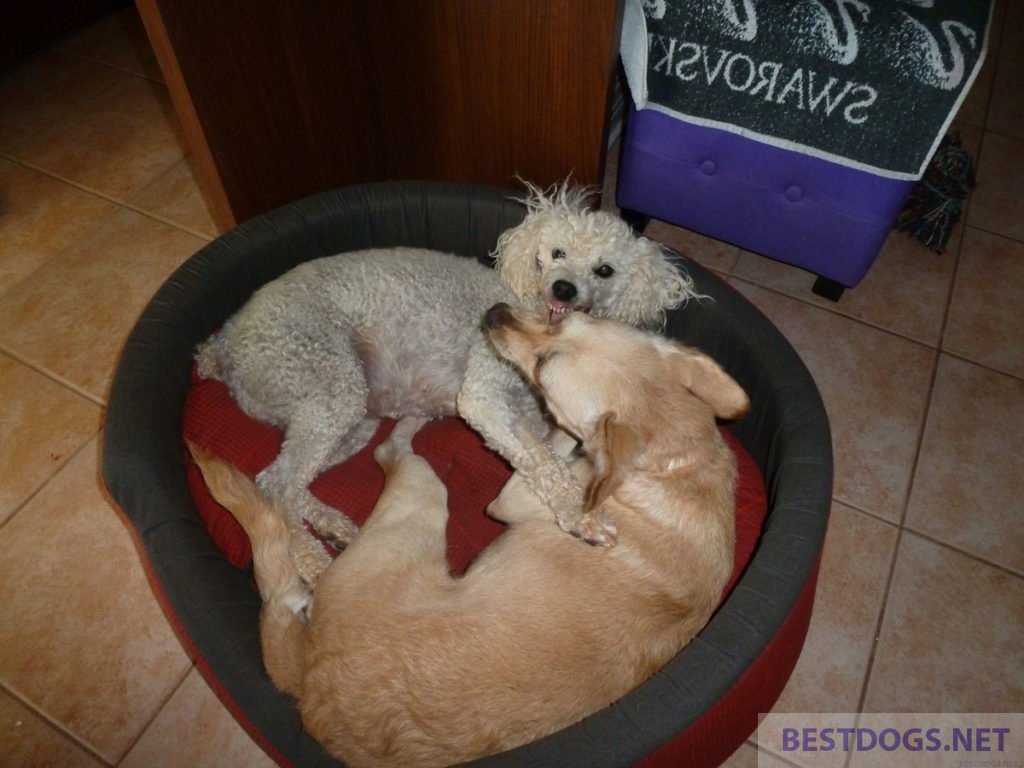
However, one should keep in mind the allelomimetic nature of the dog, i.e. the need to imitate other conspecifics. The consequence could be that the further dog could well imitate the undesired behavior, and then you have two problem cases at once.
This is an important factor to consider. If the dog is constantly suffering from stress and anxiety, it may be better to seek the advice of the veterinarian or even a behaviorist first.
Problems with anxiety

The majority of anxiety problems in dogs occur around loud noises, driving, strangers, being left alone, and surprisingly, hot air balloons. The less well socialized four-legged friends are more at risk, but all dogs can be affected by anxiety due to traumatic events.
There is a danger that the fears can increase. This begins with the fear of a truck, then it expands to the whole street, because there could be one passing by, and finally the dog does not want to go for a walk at all. This makes the dog’s life practically hell for him.
Although an owner can probably feel sorry for their dog when it has fears, these should not be inadvertently increased by attempting to comfort or otherwise give attention. At the same time, the dog should not be allowed to run away from his fears. Because with the escape the fear burns itself further into the dog brain, because the opposite experience that everything is half so bad is never made in this case.
Therefore, the evasion of danger should be made impossible for the dog with the help of a longer leash, as hard as this measure may seem.
In the case of fears which have only recently arisen due to a shocking experience and which are unlikely to be repeated, gentle coercion is also helpful. If the dog does not want to run along a path because a pickup truck thundered towards him, or he hurt himself on an unkempt fence, he should be pulled along this path for a few days without much mercy.
Helpful with these fear problems are also homeopathic remedies, such as Bach flowers or Tellington-TTouch.
For all other fears, it is best to use ‘desensitization’. This means combining for several weeks or months the situation in which anxiety occurs with something pleasant for the dog. These are, for example, his favorite treats that change the dog’s sense of ‘danger’. However, it is important not to go so far until the dog’s fear fully breaks through, and you should approach it in small steps.
A good example is the fear many dogs have of driving. With some of the four-legged friends this can have developed already so far that they press themselves with all four legs into the ground, if they come only in the proximity of the own car. In this case, of course, getting into the car is already completely out of the question.
To combat this fear, you take the dog as close to the car as you can before it starts to bristle and get all too nervous. At this moment you give the dog a treat or make a short game with him and then walk with him away from the car again.
After some time, the dog will approach this place without much fuss, since a great reward awaits him. At this moment you can then go a little closer to the car until you finally stand completely in front of it. By the way, it does not help to lure the dog to the destination with the reward – rather, it should be given only when he goes to the car of his own accord.
Causes of fear
The cause of fear in a dog is in principle quite simple: he feels threatened and this he shows with fearful or even aggressive behavior. This is a subjective assessment of the situation by the dog and therefore this behavior must be considered from his point of view.
Common reasons for this anxiety arise in the following situations:
- Something or a person is coming directly at the dog from the front.
- Something or a person comes quickly toward the dog.
- A person draws his hand over the dog.
- A person stands or leans over the dog.
- A person stares at the dog in surprise and fixes it for a long time.
- The dog feels cornered and cannot escape.
- A new, unknown situation arises with which the dog has not yet had any experience.
- A person, an object or an action awakens unpleasant memories in the dog.
Dealing with fearful dogs

Many people approach fearful dogs in particular to convince them of their friendly intentions. This is a big mistake, because this only significantly increases the dog’s fear and thus its hysterical barking and behavior.
Instead of coaxing the dog to approach and hold out your hand, the opposite is appropriate. The best thing to do is to completely ignore the fearful dog and pretend it is not even there.
While doing this, don’t look at the dog, just watch it out of the corner of your eye and soon sit down, take a deep breath or yawn in boredom.
Now you can just drop a treat for the dog and give the dog a chance to sniff the casually lowered hand without addressing or looking at him. It may also be possible to casually scratch his chest with your hand while doing this, without turning toward the dog.
As the owner of a fearful dog, you should explain this tactic to your visitors in advance and also place a bowl of treats for the dog on the table, from which everyone can give the dog something as a present.


